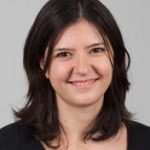Link to Pubmed [PMID] – 35037621
Link to DOI – e6951110.7554/eLife.69511
Elife 2022 Jan; 11():
The plasmid-mediated quinolone resistance (PMQR) genes have been shown to promote high-level bacterial resistance to fluoroquinolone antibiotics, potentially leading to clinical treatment failures. In Escherichia coli, sub-minimum inhibitory concentrations (sub-MICs) of the widely used fluoroquinolones are known to induce the SOS response. Interestingly, the expression of several PMQR qnr genes is controlled by the SOS master regulator, LexA. During the characterization of a small qnrD-plasmid carried in E. coli, we observed that the aminoglycosides become able to induce the SOS response in this species, thus leading to the elevated transcription of qnrD. Our findings show that the induction of the SOS response is due to nitric oxide (NO) accumulation in the presence of sub-MIC of aminoglycosides. We demonstrated that the NO accumulation is driven by two plasmid genes, ORF3 and ORF4, whose products act at two levels. ORF3 encodes a putative flavin adenine dinucleotide (FAD)-binding oxidoreductase which helps NO synthesis, while ORF4 codes for a putative fumarate and nitrate reductase (FNR)-type transcription factor, related to an O2-responsive regulator of hmp expression, able to repress the Hmp-mediated NO detoxification pathway of E. coli. Thus, this discovery, that other major classes of antibiotics may induce the SOS response could have worthwhile implications for antibiotic stewardship efforts in preventing the emergence of resistance.


